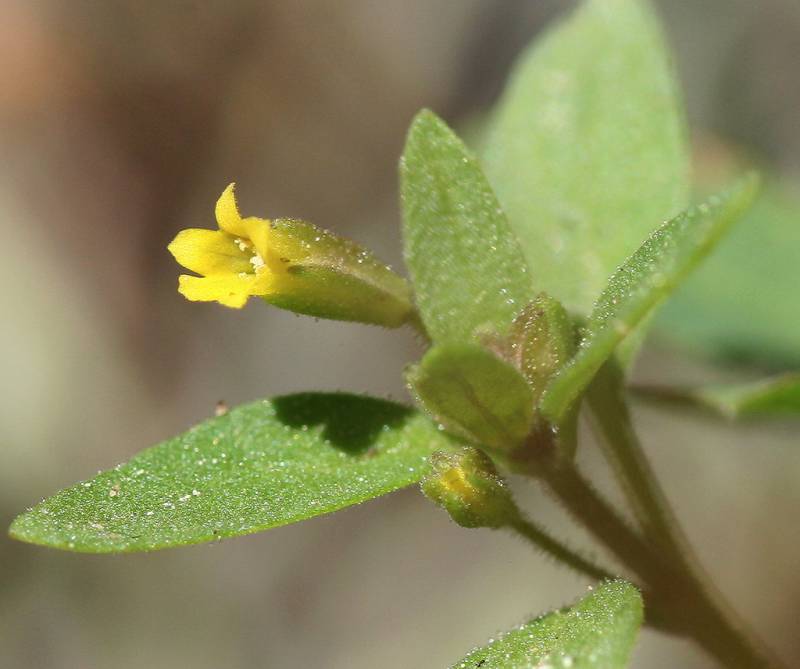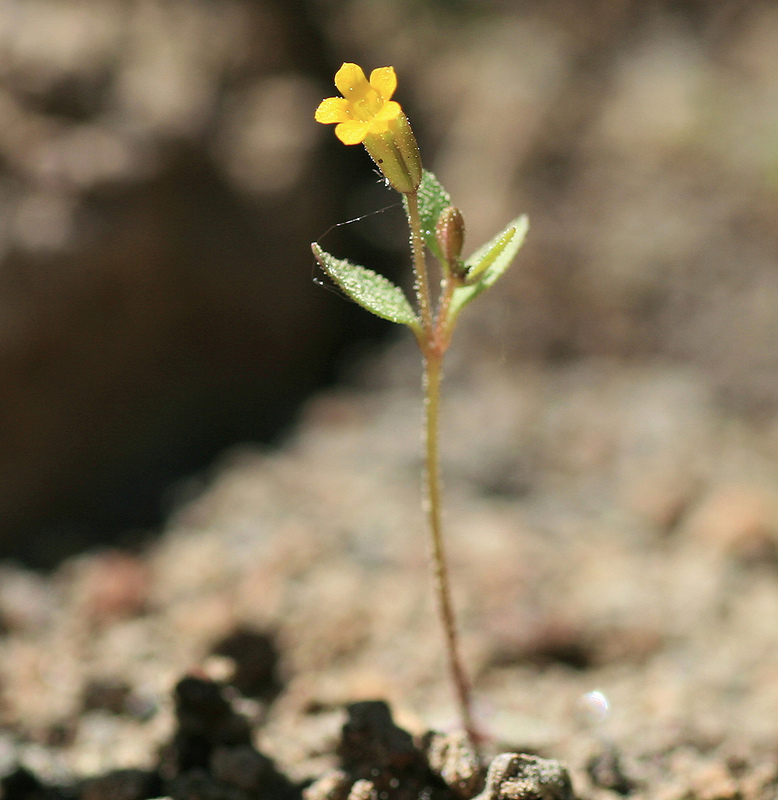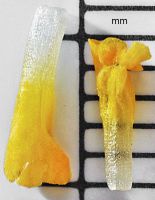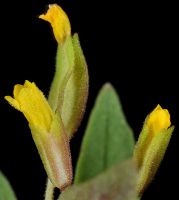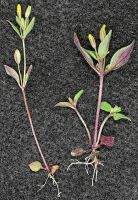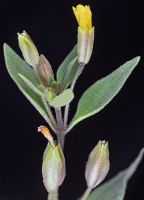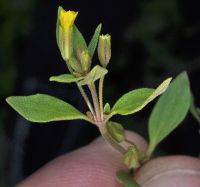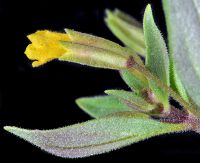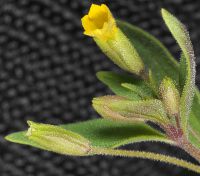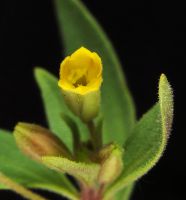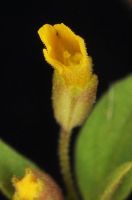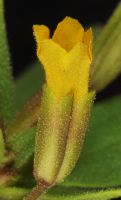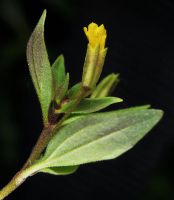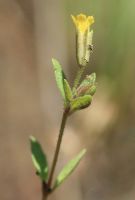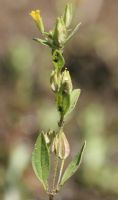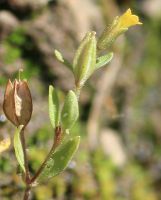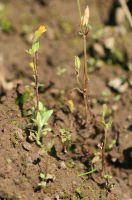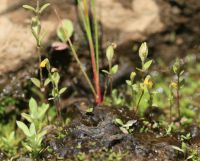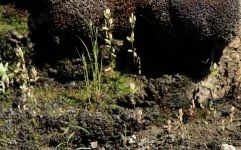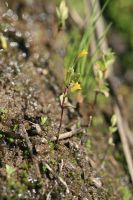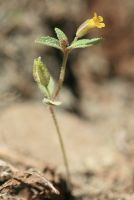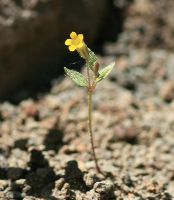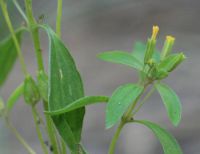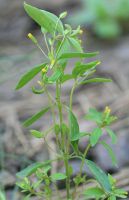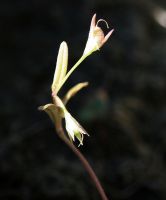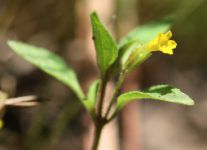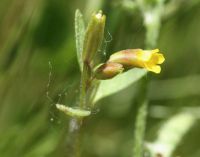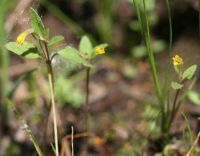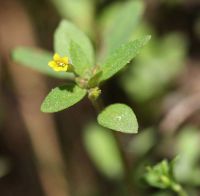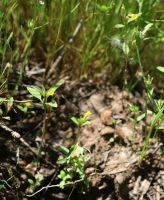Distribution: Occurring east of the Cascades crest in Washington; British Columbia to California, east to Idaho, Montana, and Nevada.
Habitat: Moist and wet open areas at low elevations.
Flowers: May-July
Origin: Native
Growth Duration: Annual
Conservation Status: Not of concern
Annuals with shallow fibrous roots; stems 4-15 cm, ascending, sharply bent at nodes, branching at nodes near base to mid-stem, covered with minute stalked glands, gland-tipped hairs 0.1-0.3 mm, occasionally with minute sharp-pointed hairs bending backward without glands.
Leaves typically cauline, basal leaves commonly not persisting past flowering; petiole 1-3 mm; blade narrowly ovate or elliptic to lanceolate, 5-15 mm long and 2-6 mm broad, mostly even-sized or becoming slightly smaller distally, 3 palmately arranged veins, base becoming narrow, margins entire or finely toothed, apex acute to obtuse, sometimes glandular-hairy as stems.
Axillary flowers 10-20, emerging from nodes at mid- to ends of stems; fruiting pedicels not bent or curved, 5-11 mm, glandular-hairy as stems; calyx winged, ridged, bell-shaped becoming somewhat ovoid-ellipsoid, strongly inflated, 5-6 mm, margins significantly toothed or lobed, sparsely covered with small rigid hairs, no glands or occasionally slightly sessile-glandular, lobes pronounced, erect; corollas yellow with red spots or stripes, with bilateral symmetry and weakly bilabiate; tube-throat cylindric to slenderly funnel-shaped, 3.5-5 mm, not protruding past calyx margin; limb minutely widened, lobes broadly obovate with rounded apexes; styles glabrous; anthers not protruding, glabrous.
Capsules 4-6 mm, included.
Publication: Phytoneuron 2012-39: 1–60. 2012.
PNW Herbaria: Specimen records of Erythranthe breviflora in the Consortium of Pacific Northwest Herbaria database
WA Flora Checklist: Erythranthe breviflora checklist entry
OregonFlora: Erythranthe breviflora information
E-Flora BC: Erythranthe breviflora atlas page
CalPhotos: Erythranthe breviflora photos

